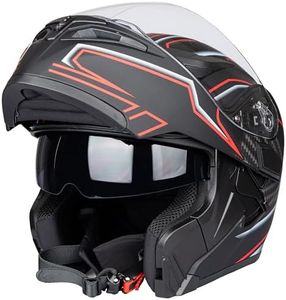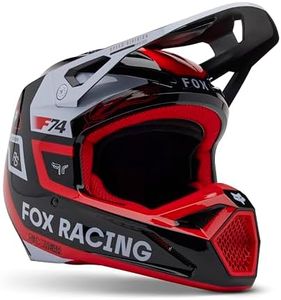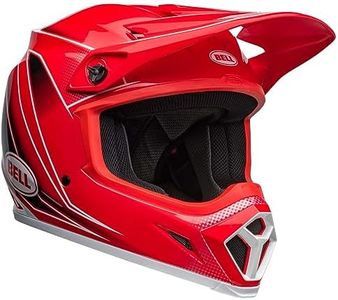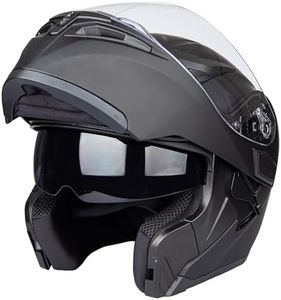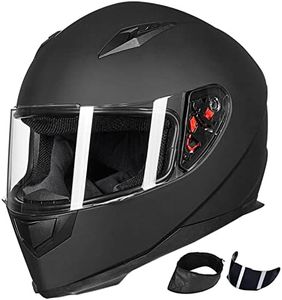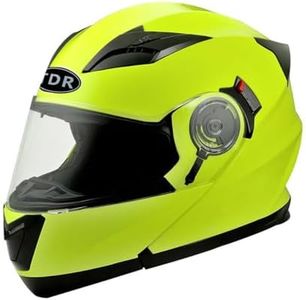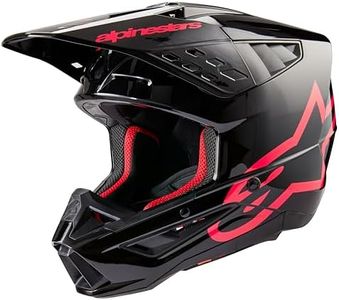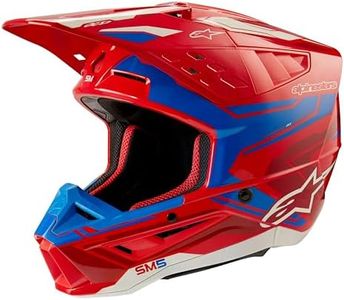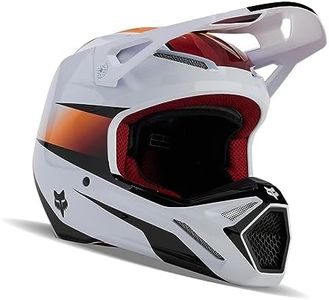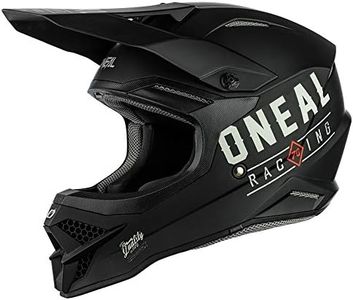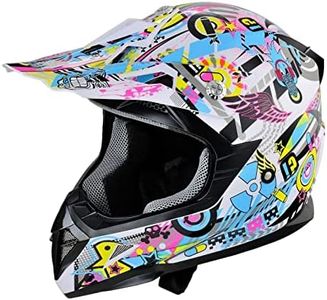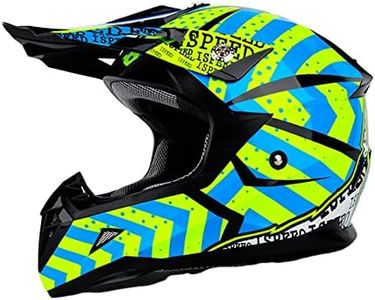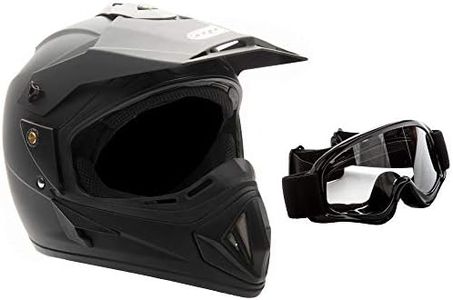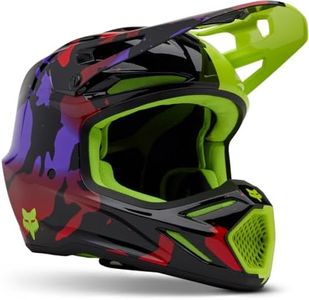We Use CookiesWe use cookies to enhance the security, performance,
functionality and for analytical and promotional activities. By continuing to browse this site you
are agreeing to our privacy policy
10 Best Dirt Bike Helmets
From leading brands and best sellers available on the web.By clicking on a link to a third party's website, log data is shared with that third party.
Buying Guide for the Best Dirt Bike Helmets
Choosing the right dirt bike helmet is essential for your safety and comfort on the trail or track. A well-fitted, high-quality helmet protects your head during accidents and keeps you safe from flying debris. Different helmets are made to suit different riding styles, terrains, and personal needs. Understanding the features and specifications of dirt bike helmets will help you make the most informed choice based on how and where you ride.Shell MaterialThe shell material is what the outer layer of the helmet is made of, and it's crucial because it directly impacts the helmet's strength, durability, and weight. Common materials include polycarbonate, fiberglass, carbon fiber, and composite blends. Polycarbonate is tough and more affordable, often a bit heavier, while fiberglass and composite blends offer a balance of light weight and good protection. Carbon fiber helmets are generally the lightest and very strong, often chosen by those who ride extensively. Your choice should reflect how much value you place on lightness, comfort, and long-term durability. If you ride frequently or competitively, a lighter and more durable material will reduce fatigue and improve your riding experience.
VentilationVentilation refers to how well the helmet allows airflow to keep your head cool and comfortable. Good ventilation is important, especially during intense rides or hot weather, as it prevents overheating and helps you stay focused. Helmets with lots of vents offer maximum airflow, which is best for riders in warm climates or those who ride aggressively. Fewer vents mean less airflow but can suit colder climates or slower-paced riders. Consider where and how you ride most often—if you tend to get hot or ride in warm environments, prioritize more ventilation.
Fit and ComfortFit and comfort cover how snugly the helmet grips your head and how comfortable it feels over long rides. This matters because a helmet that fits poorly can be distracting, unsafe, or even come off in a crash. Helmets come in various shapes (oval, round, intermediate) and may offer removable or adjustable padding. Trying on different shapes and sizes is key, and some helmets allow you to customize the padding for a better fit. Always pick a helmet that fits comfortably and securely without pressure points—this should be your highest priority for both safety and enjoyment.
Safety CertificationSafety certification is a label that shows whether a helmet meets or exceeds safety standards set by authorities like the DOT (Department of Transportation), ECE, or Snell. This is important because certified helmets are tested for protection against impacts and penetration. Helmets with at least one recognized certification are the safest choice. For racing, events often require specific certifications, so always check their rules if you plan to compete. Choose only helmets with a certification label—never compromise on this feature for your safety.
WeightWeight is how heavy the helmet feels on your head, and it’s important because lighter helmets reduce neck fatigue and make long rides more comfortable. Lightweight helmets are usually made from advanced materials and are great for riders with longer sessions or those who are more sensitive to weight. Heavier helmets are often more affordable and may still offer excellent protection, but can become uncomfortable if worn for extended periods. If you spend lots of time riding, go for a lighter option; if rides are shorter, weight may matter less.
Visor and Peak DesignThe visor or peak shields your eyes from sun, roost, and debris. It’s a significant feature for comfort and safety on dirt trails. Some helmets have adjustable or removable visors, letting you adapt to different lighting conditions or riding styles. Fixed visors are simpler and reliable, but less versatile. If you ride in a range of environments or compete, an adjustable visor can be helpful. Pick a design that offers the visibility and shading you need for your typical rides.
Interior Liner and Moisture ManagementThe interior liner provides cushioning and wicks away sweat to keep you feeling dry and comfortable inside the helmet. Good liners can often be removed and washed, which is important since dirt biking can be sweaty work. Premium liners dry faster and may resist odor. Consider how often you ride and in what conditions—if you sweat a lot or want easy cleaning, look for helmets with fully removable and moisture-wicking liners.
